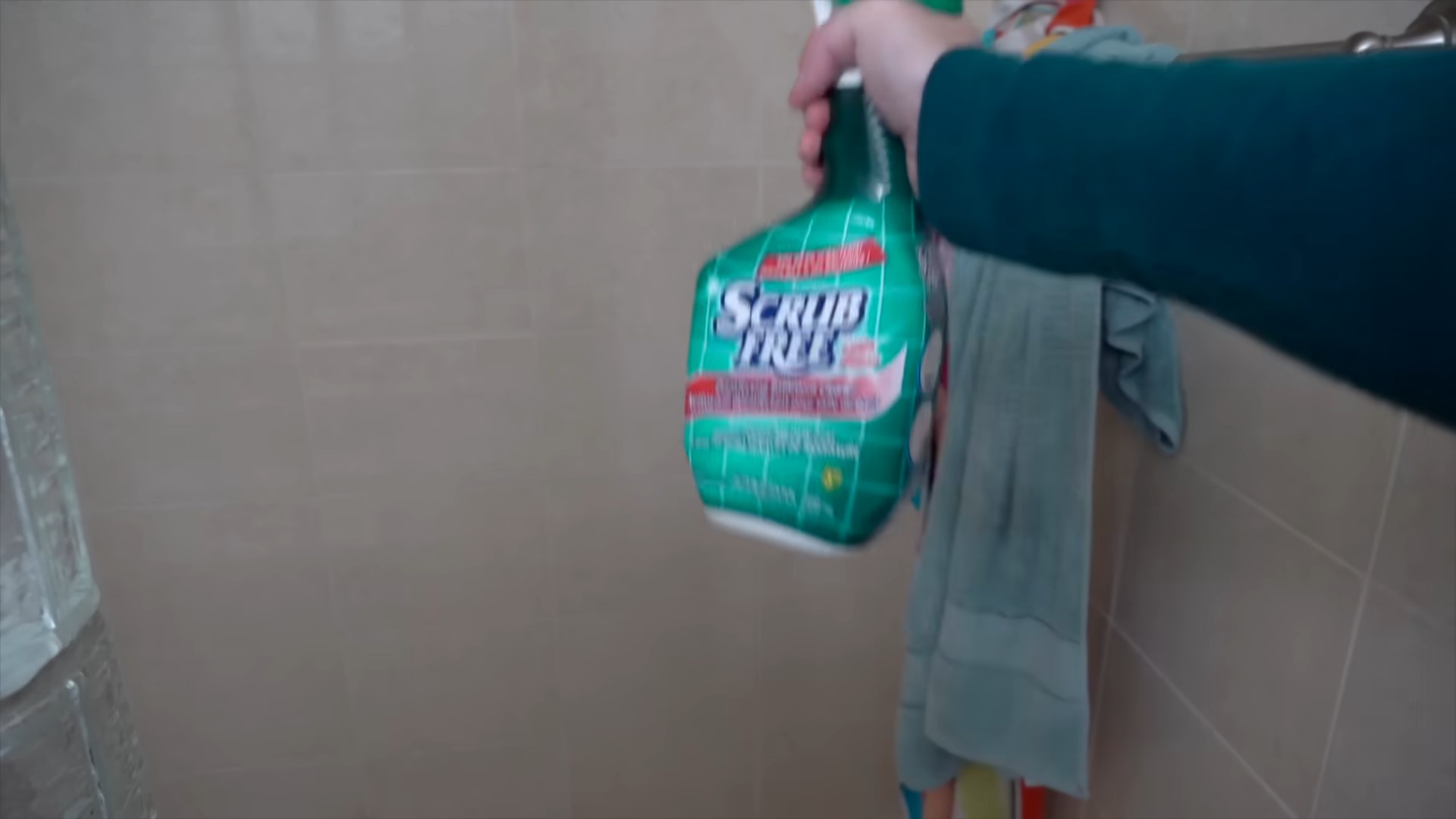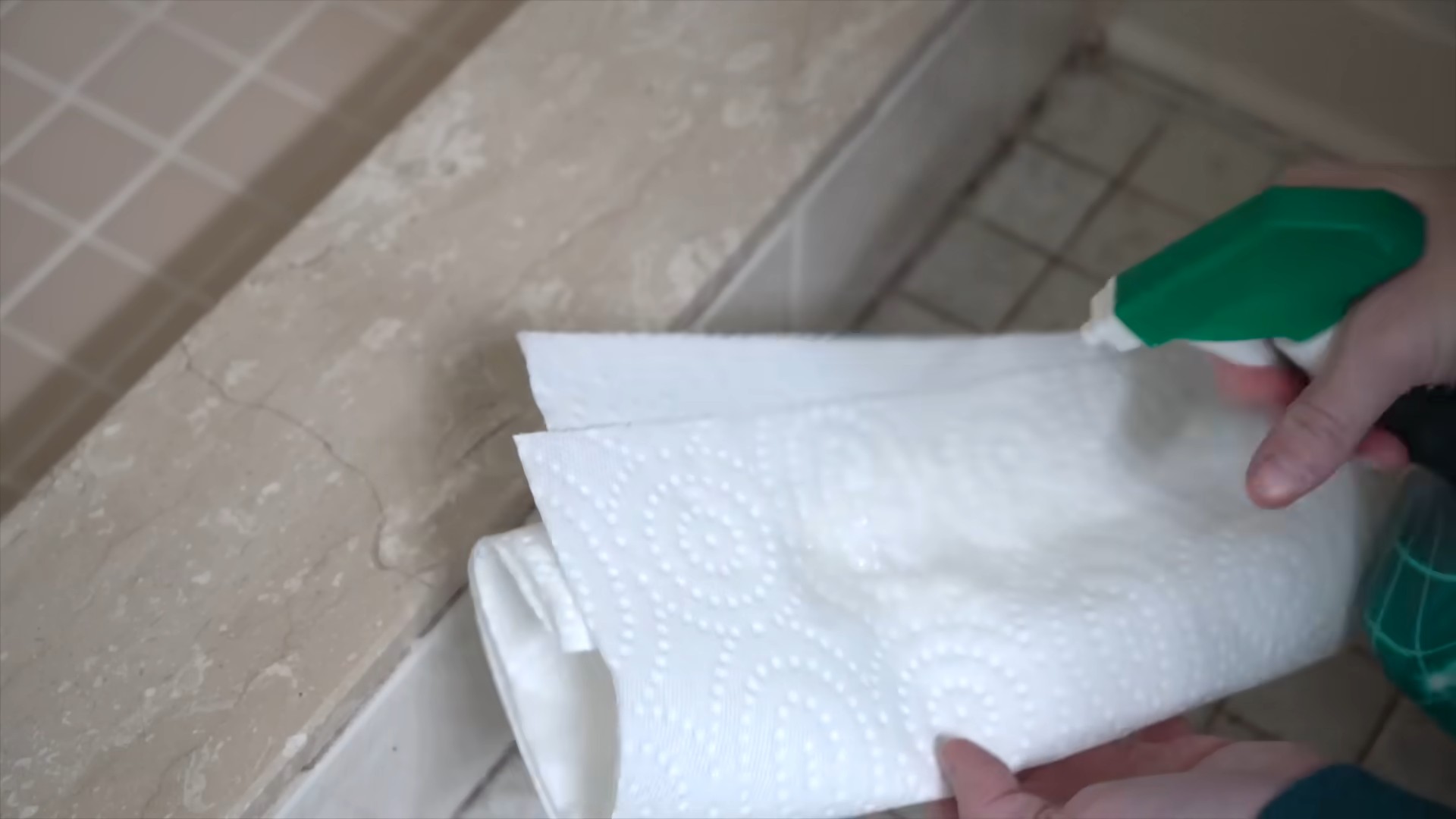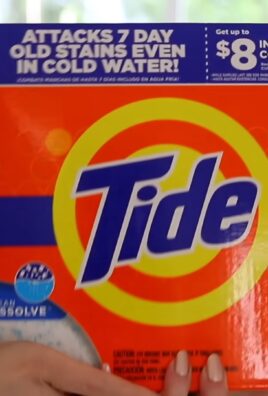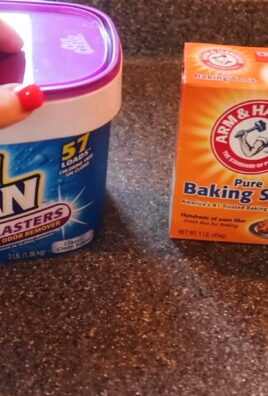Bleach Cleaning Tips: Unlocking a Sparkling Clean Home Naturally
I’ve always loved the feeling of a truly sparkling clean home, but let’s be honest, achieving that level of cleanliness can sometimes feel like a monumental task. That’s why I’m so excited to share some of my favorite Bleach Cleaning Tips – simple, effective DIY hacks that will transform your cleaning routine. For generations, bleach has been a staple in household cleaning, a powerful tool used to disinfect and brighten everything from laundry to grout. Its history stretches back surprisingly far, with early forms of bleach being used for centuries to whiten fabrics and remove stains. But using bleach effectively and safely is key, and that’s where these tips come in.
These Bleach Cleaning Tips aren’t just about getting things clean; they’re about saving you time, money, and effort. We’ll explore how to harness the power of bleach to tackle tough stains, disinfect surfaces, and even brighten your whites without harsh chemicals or expensive cleaning products. In today’s busy world, finding efficient and affordable cleaning solutions is crucial. Knowing how to properly utilize bleach can significantly reduce your cleaning time and help you maintain a healthier home environment.
Why You Need These Bleach Cleaning Tips
Whether you’re battling stubborn mildew in your bathroom, tackling a laundry pile that seems to multiply overnight, or simply want to maintain a consistently clean and hygienic home, these Bleach Cleaning Tips will become your new best friend. I’ll guide you through safe and effective techniques, ensuring you get the sparkling clean results you desire without compromising your health or the environment. So, let’s dive in and unlock the secrets to a cleaner, brighter, and healthier home with the power of bleach!

My Ultimate Guide to Bleach Cleaning: A Deep Dive
Bleach is a powerful cleaning agent, but it’s crucial to use it safely and effectively. This guide will walk you through everything you need to know to harness its cleaning power without risking damage or injury.
Understanding Bleach: Types and Safety
- Types of Bleach: There are two main types: chlorine bleach (sodium hypochlorite) and oxygen bleach (sodium percarbonate). Chlorine bleach is stronger and better for disinfecting, while oxygen bleach is gentler and safer for colored fabrics. I mostly use chlorine bleach for its disinfecting power, but always check the label!
- Safety First: Always wear rubber gloves, eye protection, and a mask when working with bleach. Bleach fumes can be irritating, and direct contact with skin can cause burns. Never mix bleach with ammonia or other cleaning products – this creates toxic gases. Work in a well-ventilated area.
- Dilution is Key: Bleach is potent. Always dilute it according to the product instructions. Generally, a solution of 1 part bleach to 10 parts water is a good starting point for most cleaning tasks. For tougher stains, you might increase the concentration slightly, but never exceed the recommended dilution ratio.
- Storage: Store bleach in a cool, dark place, away from children and pets. Keep it in its original container and tightly sealed to prevent spills and evaporation.
Step-by-Step Bleach Cleaning Guide
- Preparation is Everything: Before you start, clear the area you’ll be cleaning. Remove any items that could be damaged by bleach, like delicate fabrics or certain metals. Protect surfaces that shouldn’t be bleached with painter’s tape or plastic sheeting.
- Test in an Inconspicuous Area: Before applying bleach to a large surface, always test it on a small, hidden area first. This helps you check for colorfastness and potential damage. Let it sit for a few minutes before wiping it off and checking the results. If you see any discoloration or damage, don’t use bleach on that surface.
- Mixing the Solution: Carefully measure the bleach and water according to the instructions on the bleach bottle or as outlined above. Always add the bleach to the water, never the other way around. This prevents splashing and ensures even mixing.
- Application Techniques: For cleaning surfaces, I usually use a spray bottle to apply the diluted bleach solution. For soaking items, I use a large container or basin. Make sure the item is fully submerged in the solution.
- Soaking Time: The soaking time depends on the item and the stain. For lightly soiled items, 30 minutes might suffice. For heavily soiled items or stubborn stains, you might need to soak them for several hours or even overnight. Always check the item periodically to ensure it’s not being damaged.
- Scrubbing (If Necessary): For stubborn stains, you might need to gently scrub the surface with a soft-bristled brush. Avoid using abrasive cleaners or scrub brushes, as these can scratch the surface.
- Rinsing Thoroughly: After soaking or cleaning, rinse the item or surface thoroughly with clean water. This is crucial to remove all traces of bleach and prevent any lingering smell or damage. For fabrics, I usually rinse them multiple times.
- Drying: Allow the item or surface to air dry completely. Avoid using heat to dry items that have been bleached, as this can damage them.
Bleach Cleaning for Specific Items
Cleaning White Clothes
For white clothes, I usually pre-treat stains with a paste of bleach and water before washing them in the washing machine. For heavily soiled items, I might soak them in a diluted bleach solution before washing. Always check the care label before bleaching any clothing item.
Disinfecting Bathrooms
To disinfect bathroom surfaces like toilets, sinks, and bathtubs, I spray the diluted bleach solution onto the surface and let it sit for 10-15 minutes before scrubbing and rinsing. Ensure good ventilation while doing this.
Cleaning Grout
For cleaning grout, I apply the diluted bleach solution to the grout lines using a small brush or sponge. I let it sit for a few minutes before scrubbing with a grout brush and rinsing thoroughly. Be careful not to get bleach on the tiles themselves, as it could damage them.
Cleaning Molds and Mildew
Bleach is effective in killing mold and mildew. I spray the diluted bleach solution onto the affected area, let it sit for 10-15 minutes, then scrub with a brush and rinse thoroughly. Always wear a mask and eye protection when dealing with mold and mildew.
Troubleshooting Common Bleach Cleaning Issues
- Bleach Stains: If you accidentally get bleach stains on a colored fabric, try soaking the stained area in a solution of cold water and hydrogen peroxide. This can sometimes help to remove the stain.
- Bleach Smell: If you have a lingering bleach smell, try airing out the area or using a deodorizer. Opening windows and using fans can help to dissipate the smell.
- Damage to Surfaces: If you accidentally damage a surface with bleach, you might need to repair or replace it. Always test bleach on a small, inconspicuous area before using it on a large surface.
Important Reminders
Remember, safety is paramount when using bleach. Always follow the instructions on the product label, and never mix bleach with other cleaning products. If you’re unsure about anything, it’s always best to err on the side of caution.

Conclusion
So there you have it! Our comprehensive guide to mastering the art of bleach cleaning. This isn’t just about disinfecting; it’s about unlocking the power of a readily available household item to achieve sparkling clean results across your home. From tackling stubborn stains on whites to sanitizing your bathroom surfaces, these Bleach Cleaning Tips offer a powerful and effective solution for maintaining a hygienic and aesthetically pleasing living space. The DIY approach detailed here is a must-try because it’s cost-effective, incredibly efficient, and provides a level of cleanliness that’s hard to match with commercial products. You’ll be amazed at how easily you can banish grime and bacteria, leaving your home feeling fresh and revitalized.
Beyond the specific techniques outlined, remember that adaptability is key. Experiment with different dilution ratios depending on the surface and the severity of the stain. For delicate fabrics, always perform a patch test first to ensure colorfastness. Consider adding a touch of baking soda to your bleach solution for extra scrubbing power on particularly stubborn messes. For those concerned about the strong smell of bleach, try adding a few drops of essential oils like lemon or tea tree to your cleaning solution – this will not only mask the scent but also add a pleasant aroma to your freshly cleaned spaces. You can also explore using oxygen bleach as a gentler alternative for certain fabrics and surfaces. Oxygen bleach is a fantastic option for colored clothing and delicate materials where traditional bleach might be too harsh. Remember to always prioritize safety by wearing appropriate protective gear, such as gloves and eye protection, when working with bleach.
We strongly encourage you to try these Bleach Cleaning Tips and experience the transformative power of this simple yet effective cleaning agent. Share your experiences with us! Let us know which tips worked best for you, what variations you experimented with, and any other brilliant bleach cleaning hacks you’ve discovered. Your feedback will help others unlock the full potential of bleach cleaning and contribute to a community of sparkling clean homes. Don’t hesitate to share your before-and-after photos on social media – we’d love to see the amazing results you achieve! Remember, a clean home is a happy home, and with these tips, achieving that clean home is easier and more affordable than you might think. Embrace the power of bleach cleaning and transform your home today!
Frequently Asked Questions
What safety precautions should I take when using bleach?
Safety is paramount when working with bleach. Always wear rubber gloves and eye protection to prevent skin and eye irritation. Ensure adequate ventilation in the area you’re cleaning to avoid inhaling bleach fumes. Never mix bleach with other cleaning products, especially ammonia, as this can create toxic gases. Keep bleach out of reach of children and pets. If bleach comes into contact with your skin or eyes, rinse immediately with plenty of water and seek medical attention if necessary. Always follow the manufacturer’s instructions on the bleach bottle.
Can I use bleach on all surfaces?
No, bleach is not suitable for all surfaces. It can damage certain materials, such as wood, some plastics, and certain fabrics. Always test a small, inconspicuous area first before applying bleach to a larger surface. Avoid using bleach on delicate fabrics, colored clothing, or anything that might be susceptible to discoloration or damage. Consult the manufacturer’s instructions for your specific surfaces to ensure compatibility with bleach.
How do I remove bleach stains?
Accidental bleach stains can be frustrating, but there are ways to mitigate them. For fabric stains, try rinsing the area immediately with cold water. If the stain persists, you might try soaking the fabric in a solution of cold water and a color-safe laundry detergent. For other surfaces, the best approach depends on the material. Sometimes, a simple cleaning with water and mild soap is sufficient. For stubborn stains, you might need to consult a professional cleaning service.
What are some alternatives to bleach for cleaning?
While bleach is a powerful disinfectant, there are gentler alternatives available. Baking soda and vinegar are effective natural cleaning agents that can tackle many cleaning tasks. Oxygen bleach is a gentler alternative to traditional bleach, suitable for colored fabrics and delicate surfaces. Commercial cleaning products specifically designed for disinfecting are also readily available. The best alternative will depend on the specific cleaning task and the surface being cleaned.
How long should I let bleach sit on a surface before rinsing?
The ideal contact time for bleach varies depending on the surface and the level of soiling. Generally, a contact time of 5-10 minutes is sufficient for most applications. For heavily soiled areas or stubborn stains, you may need to leave the bleach solution on for a longer period, but never exceed the manufacturer’s recommended contact time. Always rinse thoroughly with clean water after the recommended contact time to remove any residual bleach.
Can I use bleach to clean my washing machine?
Yes, bleach can be used to clean your washing machine, but it’s crucial to follow the manufacturer’s instructions carefully. Generally, you can add a cup of bleach to the washing machine’s bleach dispenser and run a hot water cycle. This can help to remove mildew, bacteria, and other contaminants. However, avoid using bleach too frequently, as it can damage the rubber seals and other components of your washing machine over time.




Leave a Comment